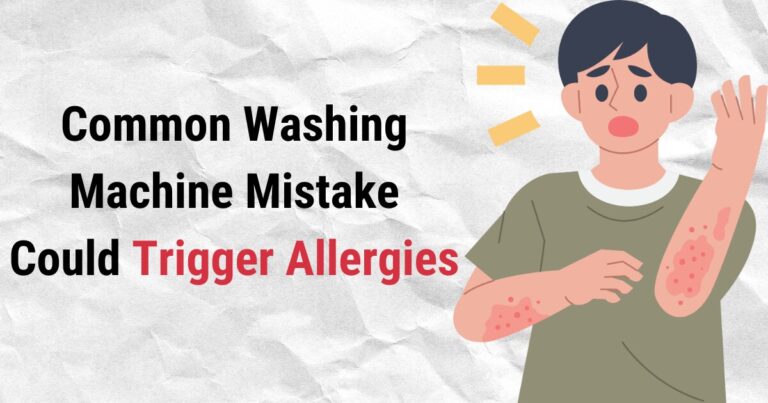In today’s modern world, technology has made our lives easier in many ways, and that includes doing laundry. Washing machines have evolved over the years, and one of the innovations that have transformed the laundry experience is auto-sensing. But what exactly does auto sensing mean on a washing machine?
Auto sensing, also known as load sensing or smart sensing, is a feature found in many modern washing machines. It is designed to automatically adjust the water level, wash time, and energy consumption based on the size and weight of the laundry load. This feature ensures optimal wash performance while conserving water and energy.
In this guide, we will delve deeper into the concept of auto-sensing, how it works, and its benefits and drawbacks. So, if you have ever wondered what auto sensing means and how it can make your laundry experience more efficient, keep reading!

What Is Auto Sensing on a Washing Machine
Auto sensing, as the name suggests, is a technology that allows the washing machine to sense the load size and adjust its settings accordingly. Traditional washing machines usually come with pre-set water levels and wash times, regardless of the actual size of the load. This can lead to inefficiency and wastage, especially when washing smaller loads.
With auto sensing, the washing machine uses sensors to measure the weight and volume of the laundry in the drum. It then calculates the appropriate amount of water and detergent needed, as well as the optimal wash time. This ensures that the clothes are thoroughly cleaned while using just the right amount of resources.
The sensors in the washing machine may vary depending on the model and brand. Some machines use pressure sensors that detect the weight of the laundry, while others may use moisture sensors that measure the water absorption level of the clothes. Regardless of the method, the goal is the same – to accurately determine the characteristics of the load and tailor the wash cycle to suit it.
Advanced auto sensing technology can not only adjust water levels but also monitor the level of dirtiness in the water and adjust the number of rinse cycles accordingly. This ensures that heavily soiled clothes receive a deep and thorough cleaning, while lightly soiled items undergo a shorter and more efficient wash cycle.
Auto sensing aims to optimize the washing process by providing customized settings for each load, taking the guesswork out of the laundry and delivering better results with less waste.
Do you know What Does E2 Mean On A Washing Machine?
How Auto Sensing Works
Auto-sensing in washing machines operates through a combination of sensors and algorithms that work together to analyze and adjust the wash parameters.
Here’s a step-by-step breakdown of how auto-sensing works:
- Loading the laundry: The first step is to load the laundry into the washing machine. It is important to evenly distribute the load to ensure accurate sensing.
- Sensor detection: Once the laundry is loaded, the sensors inside the machine get to work. Pressure sensors or moisture sensors measure the weight, volume, and absorption level of the clothing.
- Data analysis: The sensor data is then analyzed by the washing machine’s computer. Using sophisticated algorithms, the machine determines the appropriate parameters for the wash cycle.
- Setting adjustments: Based on the data analysis, the washing machine adjusts the water level, temperature, agitation level, and wash time to suit the specific load. This ensures an efficient and effective wash while minimizing water and energy consumption.
- Monitoring during the cycle: Throughout the wash cycle, the sensors continue to monitor the load. They can detect changes in water clarity, dirtiness, and the absorption rate of the clothes.
- Automatic adaptations: If the sensors detect that the load requires additional rinses or a longer wash time, the machine will automatically make the necessary adjustments to ensure optimal cleaning.
- Completion of the cycle: Once the wash cycle is complete, the machine may perform a final sensor check to ensure that the clothes are clean. It may also adjust the spin cycle and drying time based on the load weight.
By constantly monitoring and adapting to the characteristics of the load, auto-sensing technology provides an efficient and tailored washing experience. It takes the guesswork out of laundry and gives you peace of mind knowing that your clothes are getting the best treatment possible.
Benefits of Auto Sensing
Auto-sensing technology in washing machines offers several benefits that make the laundry process more convenient, efficient, and environmentally friendly. Here are some key advantages of using a washer with auto-sensing:
- Water and energy savings: One of the primary benefits of auto-sensing is its ability to conserve water and energy. By accurately measuring the load size, the washing machine adjusts the water level and wash duration accordingly, ensuring that only the necessary amount of resources is used. This not only helps to lower your utility bills but also reduces the impact on the environment.
- Optimal cleaning performance: Auto-sensing ensures that your clothes receive the appropriate amount of water and detergent for effective cleaning. The machine adjusts the settings based on the load size and level of dirtiness, resulting in thorough cleaning without overusing detergent or water.
- Preservation of clothes: Overloading the washing machine or using incorrect water levels can be detrimental to the fabric and structure of your clothes. Auto-sensing prevents this by ensuring that the load size is accurately measured and the appropriate wash settings are applied. This helps to extend the lifespan of your garments.
- Convenience and ease of use: With auto sensing, there is no need to manually adjust water levels or cycle times. The machine does all the work for you, automatically selecting the best settings for each load. This saves you time and effort, making laundry tasks more convenient.
- Improved wash quality: Traditional washing machines may struggle to provide consistent cleaning results when dealing with different load sizes. Auto-sensing technology eliminates this issue by customizing the wash cycle based on the unique characteristics of each load. This ensures a more thorough and efficient wash, resulting in cleaner and fresher clothes.
Auto sensing in washing machines offers numerous benefits that enhance the washing experience. From reducing water and energy consumption to optimizing cleaning performance, this technology brings convenience and efficiency to your laundry routine while helping to protect the environment.
Drawbacks of Auto Sensing
While auto-sensing technology in washing machines offers many advantages, it is important to consider its limitations and potential drawbacks. Here are some drawbacks to be aware of:
- Accuracy: Auto sensing relies on sensors to measure the load size and adjust the wash settings. However, these sensors may not always provide perfect accuracy. In some cases, the sensors may fail to detect the exact weight or volume of the load, leading to suboptimal wash settings.
- Longer wash times: In order to ensure thorough cleaning, auto sensing technology may extend the wash time for larger or heavily soiled loads. While this ensures better cleaning performance, it may result in longer overall cycle times, which can be inconvenient for users who are pressed for time.
- Limited customization: Auto sensing is designed to automatically adjust the wash settings based on the load characteristics. This means that users have limited control over the specific settings, such as water level or wash duration. For those who prefer more customization options, this can be seen as a drawback.
- Incompatibility with certain fabrics: Some delicate or sensitive fabrics may require special treatment that auto sensing technology may not be able to provide. For example, items that need gentle cycles or specific water levels may not be suited for auto sensing washers. In such cases, manual adjustment or alternative washing methods may be necessary.
- Inconsistent performance: While auto sensing is designed to improve wash performance, there may be inconsistencies in how the technology performs across different washing machine models or brands. Some machines may have more accurate sensors or better algorithms than others, leading to varying levels of performance.
Despite these drawbacks, auto sensing technology still offers significant benefits in terms of convenience, energy efficiency, and effective cleaning. It is important to consider these limitations and choose a washing machine model that best suits your specific needs and preferences.
FAQ about What Is Auto Sensing on a Washing Machine
What is auto sensing on a washing machine?
Auto sensing on a washing machine refers to the technology that allows the machine to detect the load size and automatically adjust the water level, wash time, and energy consumption accordingly.
How auto sensing work on a washing machine?
Auto sensing works by using sensors to measure the weight and volume of the laundry in the drum. The machine then calculates the appropriate amount of water and detergent needed and adjusts the wash parameters accordingly.
What are the benefits of auto sensing on a washing machine?
Auto sensing offers benefits such as water and energy savings, optimal cleaning performance, preservation of clothes, convenience, and improved wash quality.
Are there any drawbacks to auto sensing on a washing machine?
Some drawbacks of auto sensing include potential accuracy issues, longer wash times for certain loads, limited customization options, incompatibility with certain fabrics, and inconsistent performance across different models or brands.
How should I choose a washing machine with auto sensing?
When choosing a washing machine with auto sensing, consider your specific needs and preferences. Look for a machine with reliable sensors and advanced algorithms for accurate and effective performance.
Can auto sensing technology be used with delicate fabrics?
Auto sensing technology may not be suitable for delicate fabrics that require special treatment. In such cases, manual adjustment or alternative washing methods may be necessary.
Does auto sensing technology save water and energy?
Yes, auto sensing technology helps to conserve water and energy by accurately measuring the load size and adjusting the wash parameters accordingly.
Can I customize the settings with auto sensing on a washing machine?
Auto sensing is designed to automatically adjust the wash settings based on the load characteristics. However, customization options may be limited compared to machines without auto sensing.
Are there any specific washing machine brands that offer auto sensing technology?
Many modern washing machine brands offer auto sensing technology. It is recommended to research and choose a brand that is known for reliable sensors and advanced algorithms.
Is auto sensing technology worth it?
Despite some limitations, auto sensing technology offers significant benefits in terms of convenience, energy efficiency, and effective cleaning. It enhances the laundry experience and saves both time and resources.
Auto sensing technology has revolutionized the way we do laundry, offering a range of benefits that make the process more efficient, convenient, and environmentally friendly. By accurately detecting the load size and adjusting the wash settings accordingly, auto sensing ensures optimal cleaning performance while conserving water and energy.
Through the use of sensors and intelligent algorithms, washing machines with auto sensing technology provide customized wash cycles tailored to the specific characteristics of each load. This results in better cleaning results, preservation of clothing, and improved overall wash quality.
While auto-sensing has its limitations, such as potential accuracy issues and longer wash times for certain loads, its advantages far outweigh these drawbacks. The water and energy savings, convenience, and improved cleaning performance make it a valuable feature that enhances the laundry experience.
When choosing a washing machine with auto-sensing, it is important to consider the specific needs and requirements of your household. Look for a machine with reliable sensors and advanced algorithms to ensure accurate and effective performance.
Auto-sensing technology on washers has transformed the way we approach laundry. It provides us with a more efficient and sustainable way of cleaning our clothes, ultimately saving both time and resources.
So, the next time you see the “auto sensing” feature on a washing machine, you can confidently choose it, knowing that it will optimize your laundry routine and deliver excellent results.






